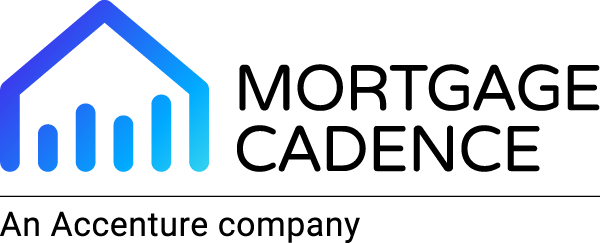Executive Summary
The
results of the 2019 Mortgage Cadence Annual Benchmarking Study are in. This
marks the seventh year the company has performed its study on mortgage lender
performance. The data, available across a number of critical performance
indicators, clearly illustrate the qualities that set the nation’s highest
performing lenders apart.
In
this short summary we’ll show you what we learned in our most recent study. A
deeper analysis is available upon request. In fact, we look forward to visiting
with you and showing you where your institution falls in terms of overall
industry performance.
History and purpose of study
Mortgage
Cadence began looking carefully at lender performance in 2012, just as lenders
were beginning to see their mortgage Cost-to-Close increase dramatically. The
goal was to uncover the keys to high performance lending. The hope was that the
results would indicate that loan origination technology was a key element in
the success formula for high performers.
To perform the study, we surveyed a range of lenders that all used Mortgage Cadence loan origination technology to sell home finance loan products to consumers in the US. To rank performance, we collected data that we could use to arrive at five key performance indicators: Velocity, Borrower Share, Pull-Through, Productivity and Cost-to-Close. Where available, we tapped regulatory filings for additional data points to contextualize our KPIs.
The
initial study indicated that technology clearly played an important role in the
leading lenders’ overall performance, as expected. As a leading technology
provider to the mortgage industry, this was the information we were hoping to
find. It gave us objective proof that the technology employed by lenders to
originate mortgage loans really matters.
But
that’s not all we found.
Because
our study controlled for technology, we were able to determine the impact of
people and process on loan performance. In addition, our study provided
baseline lending performance results at an inflection point in mortgage lending
history.
While
no one could have known for sure at the time, 2012 was the beginning of the end
of the refinance era. The refi-boom lasted one more year and then abruptly came
to an end.
Seven
years later, our ongoing study goes well beyond illustrating technology’s role
in mortgage lending. It also reveals the importance of people and process,
ultimately enabling lenders to pull the right levers to improve their
performance.
What we learned in 2019
As
with previous studies, we focused our research on the five critical performance
metrics that, together, do a better job of defining high performance lending
than anything else we have found. Here’s how the numbers came out, based on
survey and research data from participants’ 2018 loan production.
Velocity in 2018 was 64.53, up fairly significantly
from the 56.29 days reported in 2017. Remember, this is across all product
lines and all channels. (The actual velocity for just purchase loans, for
example, is closer to 30 days.) Between 2012 and 2017, Velocity had been trending
downward, falling 14% from 68.13 days when we started our research. Velocity
had fallen to a low of 54.76 days by 2014.
Lenders
gave much of that back in 2018, which we believe was the result of
compliance-related delays in an increasingly purchase money driven market as
well as housing demand. In today’s market, there are more people who want to
buy homes than there are homes to buy, lengthening the pre-approval process
because of the supply shortage. The best performing lender in the 2019 study
bucked this trend, closing loans, on average, in 32.5 days in 2018.
Lender Pull-Through in 2018 was
48.21%, down
slightly from 50.08% in 2017, which is the high-water mark for our study. Up
until this year, this metric was rising, though slowly. Here, too, we must
consider the macroeconomic factor of housing supply shortage. A lender is not
going to close on an application if the borrower never finds a home to purchase,
a scenario which is more common when demand continues to outpace housing
supply. Only 43.48% applications made it through to the closing table in 2012.
This is a critically important metric for lenders to track as a small increase
in Pull-Through can have a dramatic impact on Cost-to-Close.
This is another area in which the nation’s most effective lenders are pulling ahead. Our top performing lender this year saw a Pull-Through of an incredible 85.38%. If that seems like too much of an outlier, consider that the next highest was still at an amazing 70.3%.
Borrower Share has historically been a challenge for lenders. When we performed our initial analysis in 2012, lenders were capturing 1.31% of their existing borrowers each year for a new mortgage. By 2017, that share had fallen to just 0.86%. Fast-forward to this year, and not much has changed, with the 2018 average Borrower Share measure at .85%.
This
metric shines light on an incredible opportunity for lenders, as customers who
already enjoyed a positive experience with the institution are much easier to
market to than acquiring a new customer entirely. Even so, the highest
performing only worked with 3.29% of its previous customers in 2018.
Productivity has the clearest correlation to the
lender’s bottom line profitability. Invariably, the higher this metric is, the
more profit the lender will earn. Unfortunately, we saw Productivity fall from
5.36 loans per full time employee working in the mortgage department in 2012 to
3.31 loans in 2017.
But
that’s the macro view. A closer inspection of the numbers shows that the big
fall was between 2012 and 2014, when Productivity fell nearly 30% to 3.12.
Since then, lenders have been slowly improving this metric. By 2018, Productivity for the originators relying on
Mortgage Cadence technology was up to 3.33 loans per employee. (As compared
to 2.0 loans per employee for MBAs study.)
In
all, we saw 76% of Mortgage Cadence clients performing better than the MBA Productivity
average. In addition, we saw a number of lenders performing extremely well
here, with our top performer closing 10.18 loans per employee per month.
Finally,
while the reported Cost-to-Close
metric was significantly less in our study than it was in the 2018 Mortgage
Bankers Association survey, it was still the highest it’s been since the study
began. In 2018, it cost lenders $5,643
to close a loan, more than double the $2,776 they were spending in 2012.
Of
course, this is significantly less than the $8,975 MBA members reported in
2018. But some lenders in our study performed even better than that. The lowest
Cost-to-Close reported in our 2018 study was $1,043 per loan. In all, 86% of the
lenders in our study outperformed the MBA average Cost-to-Close.
For
the complete report on the 2018 Benchmark Study, please don’t hesitate to reach out.



